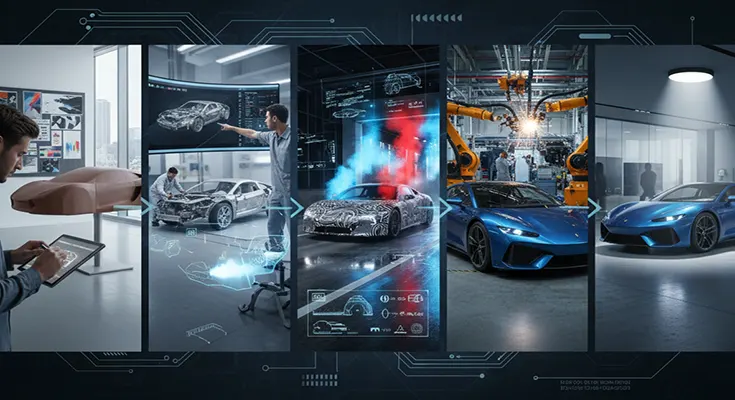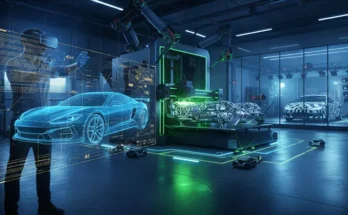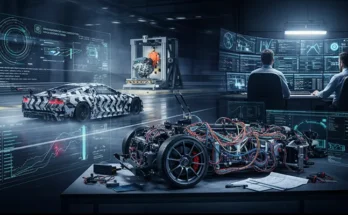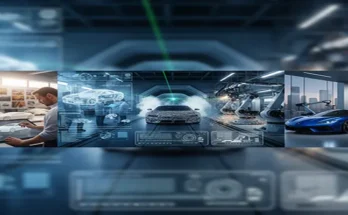Developing a new car is one of the most complex and expensive endeavors in the industrial world, often taking between three to five years and involving thousands of engineers, designers, and suppliers. It is a highly structured, multi-stage process that transforms an initial concept sketch into a mass-produced vehicle.
Here is a step-by-step breakdown of the automotive product development lifecycle.
Phase 1: Concept and Planning (The “Idea” Stage)
This phase establishes the foundational blueprint for the entire project, ensuring market viability and defining the product’s identity.
Step 1: Market Research & Product Strategy
- Goal: Define the vehicle’s purpose, target market, and competition.
- The manufacturer conducts extensive market research to identify trends, customer needs, and gaps in its current lineup. Key questions are answered: What type of car will it be (SUV, EV, sedan)? Who will buy it? What is the target price and profit margin? This results in a formal product brief and preliminary financial targets.
Step 2: Design Sketching and Styling
- Goal: Define the vehicle’s visual identity, both inside and out.
- Designers create hundreds of hand-drawn sketches and digital renderings for the exterior and interior. These initial concepts are refined based on brand philosophy, aerodynamic requirements, and packaging constraints (where the engine, passengers, and cargo will fit).
Step 3: Initial Feasibility and Packaging
- Goal: Ensure the design is technically possible and meets regulations.
- Designers and engineers collaborate closely. The preliminary design is checked against critical factors, including safety regulations, driver visibility, and, most importantly, packaging—making sure all mechanical components (engine, transmission, suspension) fit within the designer’s body shell. This often requires trade-offs between aesthetics and engineering practicality.
Phase 2: Design and Engineering Development (The “Blueprint” Stage)
In this stage, the concept is turned into a detailed, buildable design, ready for physical prototyping.
Step 4: Virtual Modeling and Clay Models
- Goal: Finalize the aesthetic design and validate its physical form.
- The chosen 2D designs are translated into highly detailed 3D Computer-Aided Design (CAD) models. Simultaneously, a full-scale physical model, traditionally made of industrial clay, is created.This allows designers to visually assess proportions and surfaces under real light and for engineers to conduct early tests on aerodynamics in a wind tunnel.
Step 5: Detailed Engineering and Digital Validation
- Goal: Design every component and subsystem of the vehicle.
- Engineering teams work on all major systems: chassis, body structure, powertrain (engine/motor and transmission), electrical systems, and cabin electronics. Advanced simulations like Computer-Aided Engineering (CAE) and Computational Fluid Dynamics (CFD) are used to digitally test crash safety, stress tolerance, and aerodynamics long before a physical prototype is built.
Step 6: Supplier Engagement and Tooling Design
- Goal: Select and integrate outside partners and prepare for manufacturing.
- A vast number of parts are sourced from external suppliers. Agreements are finalized, and engineers work with them to ensure components meet specifications. Concurrently, the manufacturing team begins designing the specialized tooling, dies, and assembly line robots that will be required to stamp and weld the final vehicle body.
Phase 3: Testing and Validation (The “Proof” Stage)
This is the most critical and exhaustive phase, where the vehicle is physically built and tested to ensure compliance, safety, and durability.
Step 7: Prototype Builds
- Goal: Create early physical versions for testing.
- Several rounds of prototypes are built:
- “Mules” (Early Prototypes): Test mechanical systems using the new powertrain and chassis under an existing car’s body.
- Design Validation (DV) Prototypes: Vehicles built with the final body design to test fit and finish, crashworthiness, and all systems.
Step 8: Rigorous Testing and Homologation
- Goal: Verify performance and achieve government certification.
- Prototypes are subjected to extreme conditions and tests:
- Durability and Endurance: Driving thousands of miles on punishing test tracks, in hot climates (Arizona/Dubai), and cold weather (Arctic Circle).
- Safety Testing: Government-mandated crash tests (front, side, rear impact) to certify safety ratings (e.g., NCAP).
- Emissions and Regulatory Compliance: Testing to ensure the vehicle meets strict environmental and technical standards (homologation) for every market it will be sold in.
Step 9: Pre-Production and Pilot Runs
- Goal: Fine-tune the assembly process and check final component quality.
- A small batch of vehicles is built using the actual production tools and assembly lines. These pre-production vehicles are meticulously inspected to identify and fix any last-minute issues with part fitment, assembly efficiency, paint quality, or panel gaps. This step validates the entire manufacturing system.
Phase 4: Production and Launch (The “Delivery” Stage)
The final phase involves transitioning from test vehicles to mass-market production.
Step 10: Manufacturing and Assembly Line Rollout
- Goal: Begin high-volume production.
- Once the pilot run is approved, the assembly line is fully ramped up. Raw materials (mostly steel and aluminum) are stamped into body panels, welded by robots in the Body Shop, coated for corrosion protection and painted in the Paint Shop, and finally moved to Final Assembly for the installation of the powertrain, interior, electronics, and trim.
Step 11: Final Quality Control and Logistics
- Goal: Ensure every finished car is defect-free and ready for sale.
- Every vehicle undergoes a stringent quality inspection, including wheel alignment, water leaks, and functional checks of all systems (brakes, lights, infotainment).Cars that pass are then sent through logistics channels to dealerships globally.
Step 12: Product Launch and Post-Launch Feedback
- Goal: Introduce the car to the public and monitor initial performance.
- The new model is officially launched with marketing campaigns and press introductions. Once sales begin, the manufacturer continuously monitors early customer feedback, warranty claims, and market performance to inform future updates and improvements to the model.
The complex journey from a single sketch to a vehicle driving off the assembly line showcases the extraordinary blend of design vision, engineering rigor, and manufacturing scale that defines the modern automotive industry.





